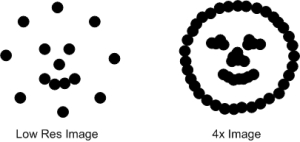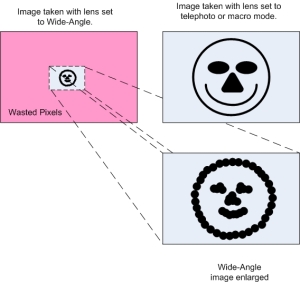There are lots of good books on how to use a camera so here we will just cover the basics on how to improve your photography for archaeology.
Why an SLR
First of all you should have an SLR camera with at least one good basic lens that has macro ability. SLR’s generally have much higher resolution sensors and wider choices of lenses than fixed lens cameras or cell phones. They also have the ability to shoot in macro mode or use extension rings instead of having to add extension lenses. SLRs generally give you much more control of the entire photographic process. You can adjust ISO, Shutter Speed, Aperture and Gain to name a few.
Macro is the ability of a lens to shoot very close to an artifact.
Some cameras even have the ability to GeoTag your photos with lat and long.
Which camera?
The rule here is simple: Buy the most camera you can afford…within reason. There is no reason to break the bank.
I recommend either a Canon or a Nikon but if you are planning on using the SLR in the lab then go with Canon as they have open architecture on their USB control that allows further control through software development.
Canon offers many low price cameras which will work very nicely in both the field and the lab. You will want a minimum of 10 MP or megapixels. The Canon T3 is a good starting point. At around $400 it has 12.2 MP and comes with an 18-55 mm macro lens (Amazon).
There are two filters I highly recommend. You will want to get a UV filter to protect the front of the lens and a polarizing filter to improve your daylight photography. I also recommend having a notebook to log your shots. There is nothing like getting back to the lab at the end of the day and wondering which shot was taken where.
I shoot projects with a dry erase board as the first shot in every series. It should contain Project Name/Location, Date, Long/Lat, Sector, Feature, Level or whatever is pertinent to your project.
A large black umbrella is very useful to have handy. On a bright sunny day, shooting into a pit will create a high dynamic range, or difference between bright and dark objects, so great as to render the photo, at the least ugly, and at the worst useless.
The other useful think to carry on a shoot is a gray or black tarp (no colors please!!!) Colored tarps will destroy the color temperature of your photographs.
The tarp, again, acts as a great shade for shooting excavation pits.
So let’s run the numbers on Image Sensors.
12.2 MP means that the image sensor creates an image using 12.2 megapixels or dots of light. Think of it this way: Imagine you had to paint a picture of me using only 15 dots ( that would be like using a 3 MP camera in our example). It might look something like the image on the left.
Now if you were able to increase the number of dots four times to say, 60 dots (12 MP Equivalent) it would be much more recognizable to the original, (which is pretty much how I look on a good day!)
More megapixels will give you better images (depending on your skill!) and a full frame sensor gives even better resolution than an APS-C sensor but you will get wonderful pictures with the Canon T3 or any of the Txi cameras. I personally own a Canon T2i and a Canon G10.
More on sensor sizes later.
Why zoom in or move closer using Macro Mode instead of taking a quick, wide-angle picture and enlarging later?
Both upper left and upper right images were taken using the same resolution camera (OK really my simulated camera!). However, when you zoom in on the left picture (see lower right) you can see that it was captured using much fewer pixels hence giving a much poorer representation of the original object (me again!). Note all the wasted pixels in the upper left image.
Aperture, Focus, and Depth-of-Field
The aperture is an adjustable hole that allows light to pass through the lens and onto the image sensor. Because the camera lens is actually made up of quite a number of individual glass lenses, objects only at a particular distance from the camera are in focus depending on the setting of the focus ring of the camera.
Suppose you are looking through your camera at a crowd of people and your aperture is wide open. If you were to focus on someone in the middle of the crowd you would notice that people much closer to you are out of focus! You also might notice that people who are farther away from the middle are also out of focus. Now look in front and behind the person in the middle. The distance between the farthest and nearest of the people who are in focus is called the depth-of-field.
Surprisingly the setting of the aperture changes the depth-of-field! Take a look and the following diagram and you will get a clue as to why this might be.
Light from an object (in this case a tree) is emitted in all directions simultaneously. Light from the top of the tree sprays out in all directions. Likewise light from the bottom of the tree does the same. If we place a shield in front of a sheet of tissue no light from the tree falls on the tissue. Now if we puncture a small pinhole in the center of the shield something very interesting takes place. Only a few rays of light from the roots and a few rays of light from the top of the tree can pass through the pinhole. The same is true of every part of the tree, only a few rays pass through the pinhole. The result is that all of those few rays passing through the pinhole form an image on the tissue, however the image is upside down and inverted.
If the hole were made bigger then more rays from each point on the tree would pass through the larger hole at slightly different angles causing the image to blur.
So you can see that by closing the aperture you block the stray rays of light that would contribute to blur and thus achieve a greater depth-of-field and a sharper image.









